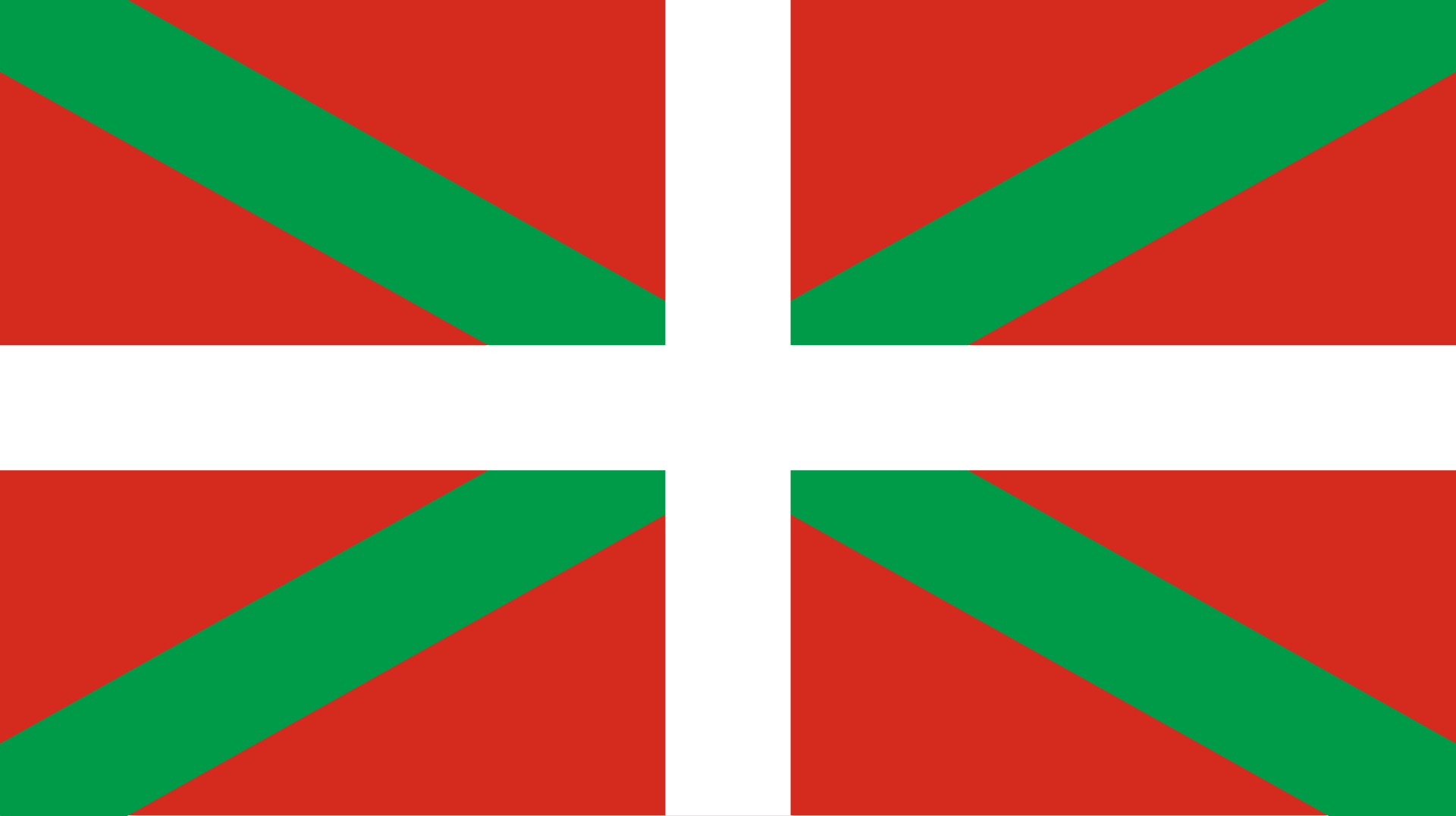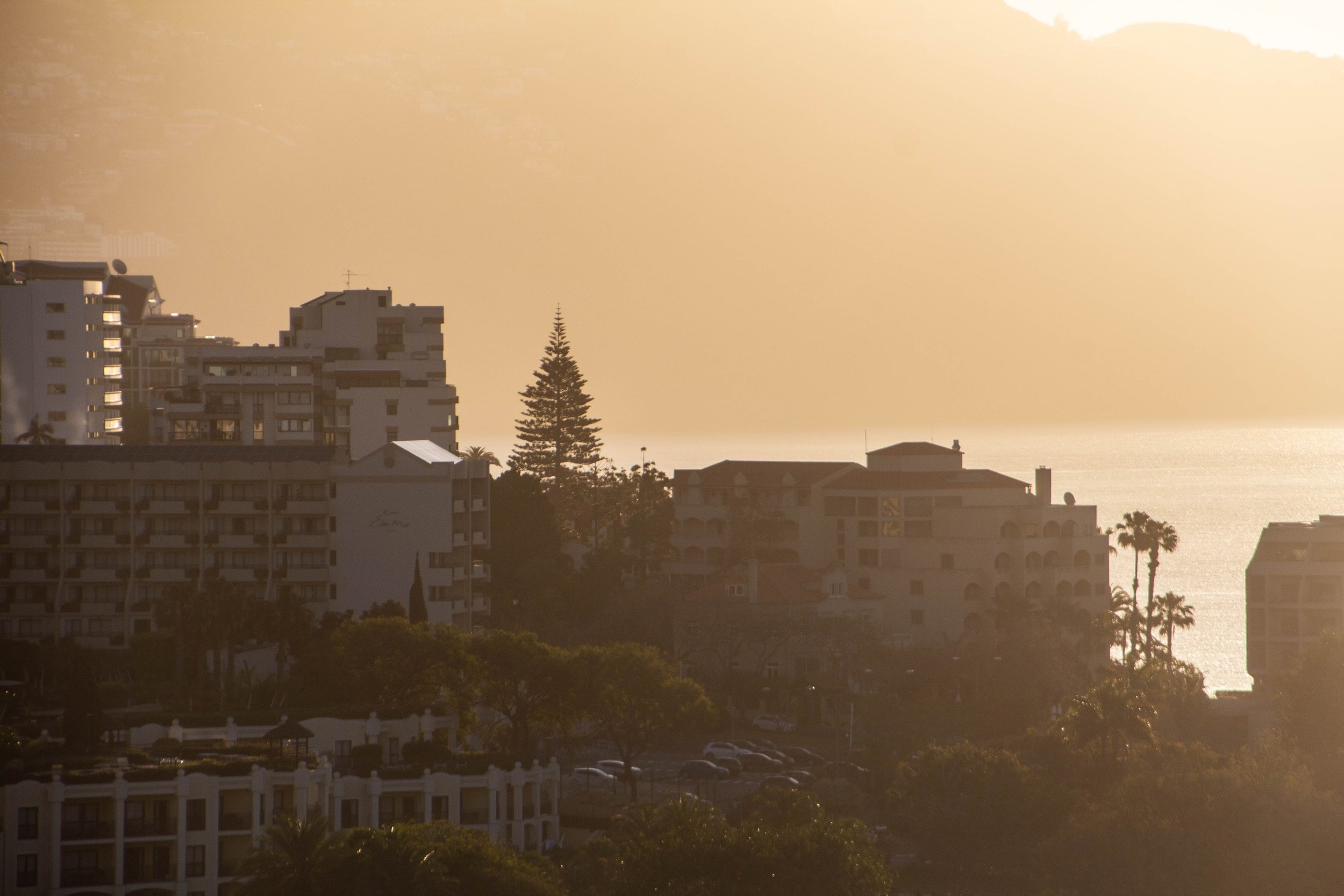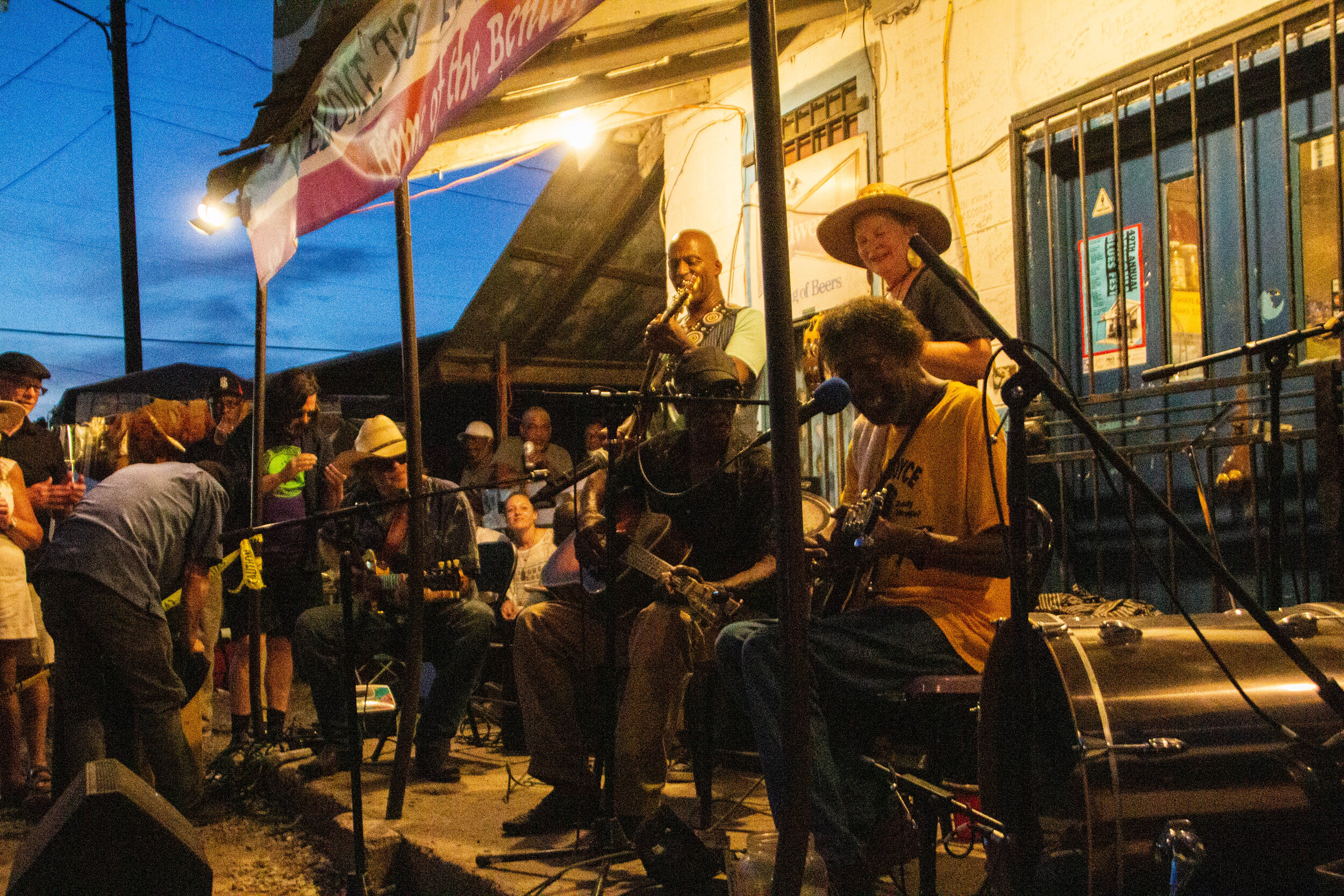Many moons ago, when I was a university student living & working in Madrid, I turned down the opportunity to visit the city of San Sebastian in Northern Spain. I think I was just tired or overwhelmed or something… but, in the time that has passed since, I have come to suspect that this may have been a mistake. You see, in the past few years, there is a specific cultural minority in Spain that has become an object of fascination for me: the Basques. And San Sebastian—which is already well known as one of the coolest places in Spain—just so happens to be a BASQUE city.
To get to San Sebastian, we flew into the capital of Spanish Basque Country: Bilbao. This is also a city I plan to explore in the future, but for now, we’re just catching a bus to San Sebastian. However… I want to pause here before we jump to our ultimate destination….
Random Football (Soccer) Prologue
On the airport shuttle to the bus station, we found ourselves driving on the highway right behind the Manchester United bus and their police escort! This was the night of the Europa League semi-final, where the Premier League giants Manchester United would play against the La Liga side, Athletic Club Bilbao (“Athletic Club”). When we arrived in the Bilbao city center, we found ourselves right in front of the football stadium, and the Athletic Club bus would soon pass directly in front of us as it arrived for that night’s game!
I have absolutely no connection to Bilbao, but over the past few years I have become something of an Athletic Club fan from afar. You see, unlike most clubs who have manufactured teams of big-name international players that are completely non-reflective of the populations that they represent—which includes my beloved Napoli—you cannot play for Athletic Club unless you were born on Basque territory, or learned to play football at a Basque youth academy from a very young age. Compared to their competitors, whose players hail from all over the world, the talent pool here is absolutely TINY. And yet, Athletic Club is consistently one of the best teams in the world, typically finishing in the top 3 to 5 teams of La Liga, often behind only Real Madrid, Atletico Madrid, and Barcelona, making them a consistent presence in UEFA Champions League and/or Europa League. Their main domestic rival is the other Basque team, Real Sociedad, which is based out of San Sebastian and it also a force to be reckoned with in European football.
Here are a few pictures of the pre-game madness that we experienced as we passed briefly through Bilbao. One day I will return to cheer for Bilbao in the “Basque Derby”… but, for today, hopefully this has piqued your curiosity about who the Basques are, because we’re about to do a deep dive!
An Introduction to the Basques
The Basques (also known as Euskaldunak) are an ethnic group with their own culture and language whose historical home straddles the Pyrenees mountains, occupying northern Spain and southwestern France.
The Basque Flag; watch out of this in the photo galleries to come!
What makes the Basques so intriguing? Let’s start with language. I’m sure you’ve heard of some of the major language families, such as Romance Languages (e.g. Spanish, French, Italian, Portuguese), Germanic Languages (e.g. English, German, Dutch, Swedish), and Slavic Languages (e.g. Russian, Polish, Czech, Serbian). These are groups of related languages that all evolved from a common ancestral language. In fact, languages all over the world can mostly be grouped into “families”… but Basque (Euskara) doesn’t fit into any of them. It is a language isolate, meaning that is bears no relationship at all to any other surviving language. Its origins are utterly mysterious, and the culture it belongs to… oh boy.
If you know anything about European history (and indeed, history in general), you know that is it almost impossible to find an ethnic bloodline that was never intermingled with another. Empires rise and fall, conquering the surrounding lands and mixing their DNA with the locals. For example, much of the original inhabitants of modern-day England are descended from peoples who were historically French or Scandinavian and had previously invaded England. Well… the Basques have SOMEHOW managed to withstand it all. Their ancestry is a straight line that can be drawn back even farther than history itself. Indeed, archeological evidence suggests that they have been living in this same spot in Northern Spain/Southwestern France at least since the paleolithic era of pre-historic times.
So—jumping forward to the modern-day—Basque people take a lot of pride in their cultural identity! It was not always a given that Basque culture would survive as modern Spain began to take shape and power was centralized in Madrid. As a result, a Basque nationalist movement emerged in the late 1800s. When Spain became a dictatorship under Francisco Franco in 1939, Basque culture was subject to brutal suppression as all minority ethnic identities were forced to assimilate under the banner of Castilian Spain. As part of this, Euskara (the Basque language) was banned, and the Basque nationalist movement became increasingly radical in response, eventually giving rise in 1959 to a terrorist organization called Euskadi Ta Askatansuna (ETA), which means “Basque Homeland Freedom”. ETA conducted a campaign of violence against the Spanish state continued long after Franco’s death in 1975. In the transition to democracy that would follow, the Basques were granted a huge degree of autonomy, which made their newly-formed regional government one of the most powerful sub-national entities in Europe. Here you’ll see the present-day borders of Spanish Basque Country.
However, ETA continued its campaign of violence against the Spanish state well into the 21st century, with the final lethal attacks occurring in July 2009, with bombings in Burgos and on the Island of Majorca. By that point, ETA’s terrorist activities had claimed 800 lives in Spain, and even Basque nationalists had soured on them. Under political pressure not only from the Spanish government, but from the Basque population as well, ETA declared ceasefire until 2011, and officially disbanded in 2018.
Today, Basque Country is one of the most prosperous regions of Spain, having produced global brands such as Iberdrola and BBVA. Not everybody living in this region is Basque, but more than half of the population here speaks, or at least understands Euskara. However, most people here are multi-lingual, with only an estimated 15% of the population using the language as the exclusive mode of communication in their homes. As we will learn in the next article, it definitely takes effort to keep this language and culture alive. But this is effort that the Basques have proven themselves more than capable of for millennia at this point, so I don’t think they’re going anywhere soon.
So, now that you know all about the Basques, let’s jump into San Sebastian! Cultural intrigue aside, it’s a gorgeous little city on the coast, and it also goes by two names: “San Sebastian” and “Donostia”. These names are completely interchangeable; the difference is language. “San Sebastian” is the Spanish name, which is most recognized internationally, while “Donostia” is the Basque (Euskara) name. Here’s the map for your reference. Now let’s jump in!
Our first morning in San Sebastian was cozy and overcast, luring us out for the first coffee of the trip. However, the overcast skies soon took on a menacing darkness; car headlights began switching on at ~10:30am, and we quickly found ourselves caught in a torrential downpour. It wasn’t the sunny Spanish summer I remembered, but inclement weather always lends itself to interesting photos:
Fear not, dear reader! This was the only precipitation of the trip. Although you will see some cloudy skies sprinkled throughout the rest of this article, there are also some beautiful sunny sights waiting for you. We’re going to go through the city piece by piece, sharing photos, impressions, and stories from each place.
Gros & Zurriolako Hondartza
I’ll start with a neighborhood called Gros (pronounced exactly like “gross”).
To me, Gros is where San Sebastian’s ‘beach vibes’ felt the strongest. The entire city is coastal, of course, but the stretch of beach in front of Gros—Zurriolako Hondartza—is perhaps the most interactive of all of San Sebastian. The other notable beach—Kontxa Hondartza (La Concha Beach)—is definitely the more famous and often-photographed area, but it is sheltered in a cove that prevents the most heavy waves from reaching the city center. Zurriolako Hondartza, however, is fully exposed to the North Atlantic seas which thrash the Bay of Biscay each day, and has become something of a surf-spot because of it! As we walked down Zurriola Hiribidea (the main street that passes along the water front), we saw lots of people walking or biking with their surfboards toward the beach. There were also board and wet suit rentals right on the sand for visitors. If I’d had more time, I would definitely have spent a day surfing here!
The actual neighborhood of Gros had a certain California-esque quality to it. The direct exposure to the wind and the waves seemed to carry a thin layer of beach sand onto the streets that served as a constant reminder of your proximity to the ocean. Not that any reminder was needed; the salty sea breeze and abundance of surf shops were more than enough. However, in addition to the trendy coffee shops and clothing stores, there were also other outdoor sports shops scattered throughout Gros. We spent quite a while in a bike shop at one point, where I shazam’d the song that will be the track of the day in today’s post. Gros definitely brings big indie vibes that I have now come to associate strongly with San Sebastian as a whole. While the rest of the city is a great fit for any idyllic, Insta-worthy European vacation, the archetype of the “Basque dude around my age” that I now have wears vans, ripped jeans, and a black tee. And they probably feel very at home in Gros. We’ll explore a lot more of course, but San Sebastian—and, indeed, Basque Country as a whole—brings with it a definite euro-surf-punk aesthetic.
Central San Sebastian & Old Town
These areas were more aligned with my expectations for San Sebastian. This is known as quite an affluent city in the broader context of Basque Country, and it also has the 2nd most Michelin star restaurants per capita in the world, behind only Kyoto, Japan. So, the central stretches of this city are as beautiful and old as would be expected. Except that, by European standards, it’s actually not that old!
Central San Sebastian was pretty much burned to the ground in 1813 in the Peninsular War! It was then rebuilt in the Belle Époque style, emulating Parisian architecture. Prior to the burning of San Sebastian, the city was said to have a much more medieval feel to it. But wait a minute—what was the Peninsular War?? For me, the name rang a bell, but I had to do a bit of research figure out that it was one of the (many) Napoleonic Wars that took place throughout the 1800s. As somebody with a borderline-encyclopedic knowledge of European history starting in the 1900s, this highlighted (highlit?) to me just how little I know about the Napoleonic era. Apparently, the battle that saw San Sebastian burn to the ground was fought between the French, who were occupying the city at the time, and Britain and Portugal. Ultimately France was ousted from San Sebastian, but something like ~75% of the city was destroyed in the process.
ANYWAY, Old Town (Spanish: Parte Vieja; Basque: Alde Zaharra) faired slightly better, and therefore still retains a truly old-world feel. This area is also said to contain the most bars per capita of anywhere in the world! I’m going to call BS on that right now, as I seriously doubt there is any statistical rigor behind this claim, but it is an undeniably dense area that is PACKED with lots of cool pintxo bars.
Pintxos (pronounced "peen-chos") are basically Basque tapas, and they are an inseparable part of the culinary and drinking culture of Basque Country. Pintxo bars actually have a quite a consistent vibe to them, but we’ll get to that at the end of the article when it gets dark. (This article combines multiple days into 1 mega-day so the sun gets lower in the sky of each photo as you scroll down.)
The last thing that I will flag for you before I set you loose on this gallery, is Basque Cheesecake. Having only been invented in the 1990s—courtesy of the chefs at a legendary San Sebastian pintxos bar called La Viña—this is a very recent addition the long list of Basque attractions. However, in the ~35 years since its invention, it has become something of a global phenomenon. Here’s what it is…
Basque Cheesecake is a crustless style of cheesecake that uses less flour, is smoother in texture, and less sweet than traditional cheesecake. It’s also cooked at an extremely high temperature to give it a burnt—even scorched—looking surface, and is typically served at room temperature. Here’s a recipe for it. To me, it’s like Cheesecake was hybridized with Crème Brûlée or Flan. Whether or not you ever visit San Sebastian, you’re likely to cross paths with this treat at some point in your life. It’s everywhere now.
Now, here are some photographs from Central San Sebastian, and Parte Vieja combined…
The beach around which Central San Sebastian and Parte Vieja are oriented is Kontxa Hondartza, or La Concha Beach. I mentioned this earlier when I was contrasting it against the surfer beach in front of Gros; this is the centerpiece of the city. If you look up San Sebastian on Google, these will be the first images you see. But these images are likely to be much sunnier than what you will see here. We walked through this waterfront area many times during this trip, but it was nearly always either dark, or overcast.
But, the upside of this was that the beach was mostly vacant, which allowed a few artists to make their way down onto the sand at low tide and create massive pieces of art by drawing lines in the wet sand with sticks. I had actually never seen this done before! It’s a really cool idea that is uniquely served by the geography of San Sebastian’s waterfront, as the boardwalk looks down 50-100 feet onto the sand so these images can be seen from above.
Now we’ve arrived at the highlight of San Sebastian. I was joining my buds Jason & Jimmy on this trip (shout-out to them 😘) and for them, San Sebastian—and, indeed, all of Spanish Basque Country—is more than just a cool place; it’s more of a spiritual home. They come regularly, and one morning, they ran into somebody they knew from a previous trip (a local) at breakfast. They got to talking, and they suggested we go to a party the following evening that was at an old castle. They described the location to us and we agreed to check it out. Now that this is over, I can tell you with 100% certainty that there was absolutely no way we would have stumbled onto this organically. This was extremely lucky, especially for me, who rode my friends’ coattails into this beautiful evening.
Here’s a map to show you our destination for that evening.
We knew where this castle was on the map… but it was on clear on how exactly we were supposed to get there. Taking our best guess, we started up the mountain on what seemed to be a footpath that would lead us where we needed to go. The only problem was that this path was closed for construction at multiple points. Each time, we debated turning back, but ultimately pushed on and found our way onto more solid path. Soon we found ourselves gaining altitude as the views over the harbor and waterfront grew better and better. With each path closure and construction area we bypassed, the people sharing the path with us grew fewer and farther between. And younger, and cooler-looking.
For the final stretch, we took a steep uphill hike through the forest, eventually arriving at the aged walls of the castle we had been promised. Music could now be heard clearly, wafting downward toward us. We walked through a medieval corridor and up a few flights weathered stone stairs to emerge into… a party!
The view from up here was really quite incredible! With the sun sliding lower in the sky, the golden light illuminating the mountainous Basque landscape around us was amazing. When I look back at these photos, I tend to hear simply the quiet whistling of the wind as the soundtrack, but in truth, it was both loud and crowded. There was a viewing point that looked out over the harbor where a live band had set up, playing mostly covers of classic songs. The crowd was gathered around, drinking, cheering, and singing along. The one remaining inhabitable structure in the ruins of this castle had been converted into a bar. We jumped in line, and soon I was experiencing—for the first time in 10 YEARS—the fizzy Sangria that I’d loved so much in Madrid while I was living there. It felt like a lifetime ago, but the Sangria tasted exactly the same. You gotta love the Spanish summer!
We climbed upward, and found a grassy area overlooking the live band. And then, even farther upward, we found another—much more spacious area—overlooking the first two. By the time we got to the top, I realized there were probably a lot of different paths that would have led us here, but the scenic route that we took added to the mystic of the moment for me. It was up here that we watched the sunset, surrounded by beautiful strangers, sitting on an old castle wall, drinking Sangria. I knew as it was happening that this would. be one of the highlights of my year. I had no business being in such a beautiful place.
While up there, the aforementioned Jason, ever the social butterfly, used his flawless Castilian Spanish to strike up a conversation with a group of people next to us. We spoke to them for a while and ultimately walked back down the mountain with them to Parte Vieja when dusk arrived and the music stopped. In my conversations with them, I learned that—although Spanish was also a first language for them—Euskara was actually the primary language used in school for them. They literally learned math, science, etc, in the Basque language.
“Ok but in your daily life now, when you walk into a shop and need to start speaking to somebody that you don’t know, do you start speaking in Spanish, or in Euskara?”
They were from a decidedly less international place called Irun, which is just east of San Sebastian, toward the French border. In Irun, they would certainly speak in Basque, but even here in San Sebastian, they’d start with Basque most of the time! Euskara seems to be alive and well, which is very cool. We’ll go a bit deeper on this in the next article, but for now, here are a few shots from the walk back down to sea level.
My nights in San Sebastian were mostly spent hopping between restaurants and pintxo bars. The restaurants were universally fantastic, but the pintxo bars were where I really got the sensation that I was getting to know this place. In the heart of Parte Vieja, I was reminded of the streets of Naples, where the nightlife spilled out of bars onto the streets, so people would be enjoying their food and drinks on the steps of centuries-old churches. Of course it was quite a bit cleaner than Naples, but the energy was similar.
These pintxo bars weren’t always the most aesthetically pleasing places on the inside, but they were all crowded with people. We patronized a few of them, nestling into the crowd to enjoy a few beers and assorted small food items. Usually the selection of pintxos was on display at the front of the restaurant, where people crowded around to place their orders. Some of the most typical pintxos we saw included…
Skewered anchovy with pickled guindilla pepper and an olive
Crab on a stick with mayo, boiled egg, and lettuce
Salted cod with garlicky olive oil emulsion, served hot, atop a slice of bread
Baby squid in its own ink
Slow-cooked egg (sometimes quail eggs) with truffle oil
Beef tenderloin topped with seared foie gras
Octopus with paprika and potato
Mussels stuffed with onion and béchamel, which had been breaded and fried
To be perfectly honest with you, while I loved the atmosphere of these bars and the idea of these items… there were not many things on these menus that I wanted to eat. By the end of the night, I found myself contentedly having a beer with fries. If I ever host a travel show, the theme will be music, not food. 😂
Here’s an assortment of shots of San Sebastian after dark…
San Sebastian/Donostia is a hard place to dislike! While most travelers will visit only this place and nowhere else in the region, Basque Country does actually deserve a lot of exploration! There are 2 more articles in the queue for this series on Basque Country. In the first, we’ll go a bit deeper into Spanish Basque Country, and in the second, we’ll cross the border and get a taste of French Basque country. I’ll come back for Bilbao eventually, but this will do for now.
So, until then, I’ll leave you with some Basque surf-punk vibes. Spain’s Basque Country has been prolific with this genre of music; there was a lot to pick from.


































































































































































































